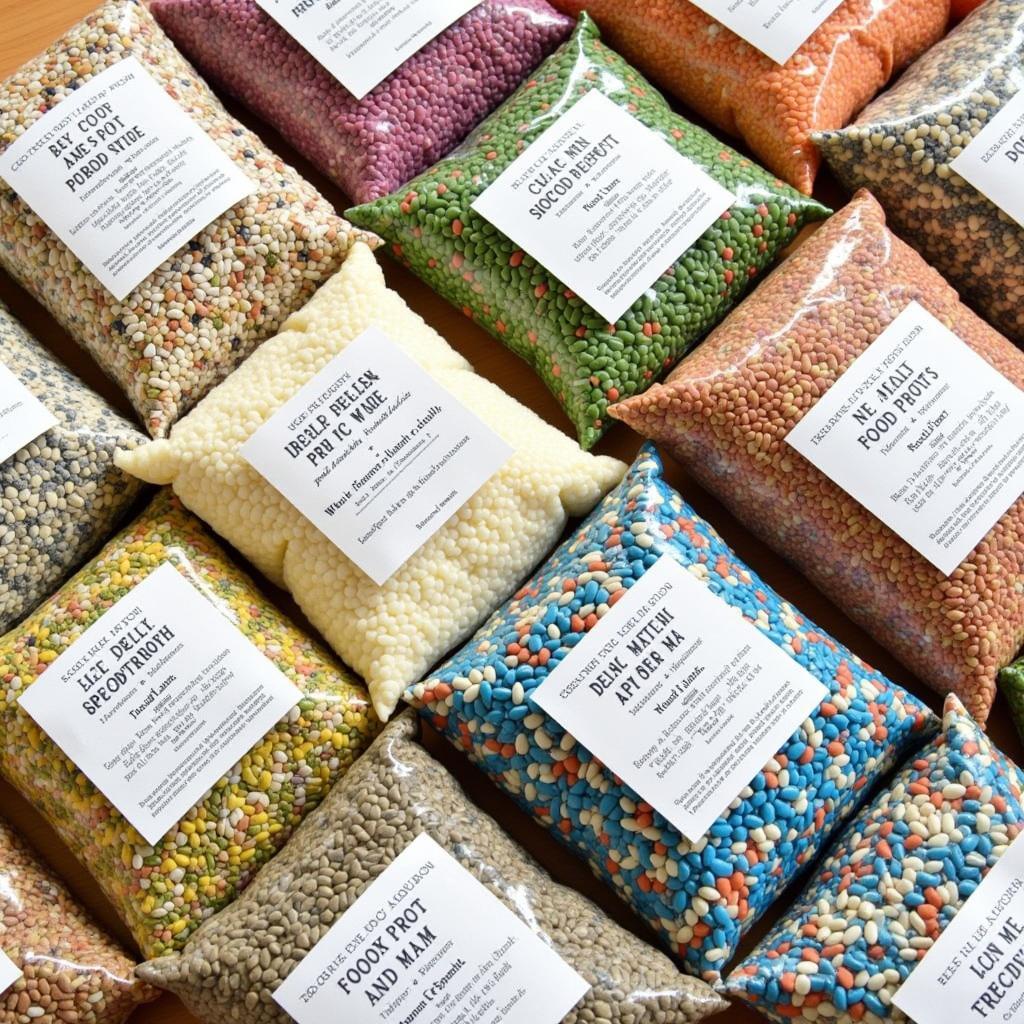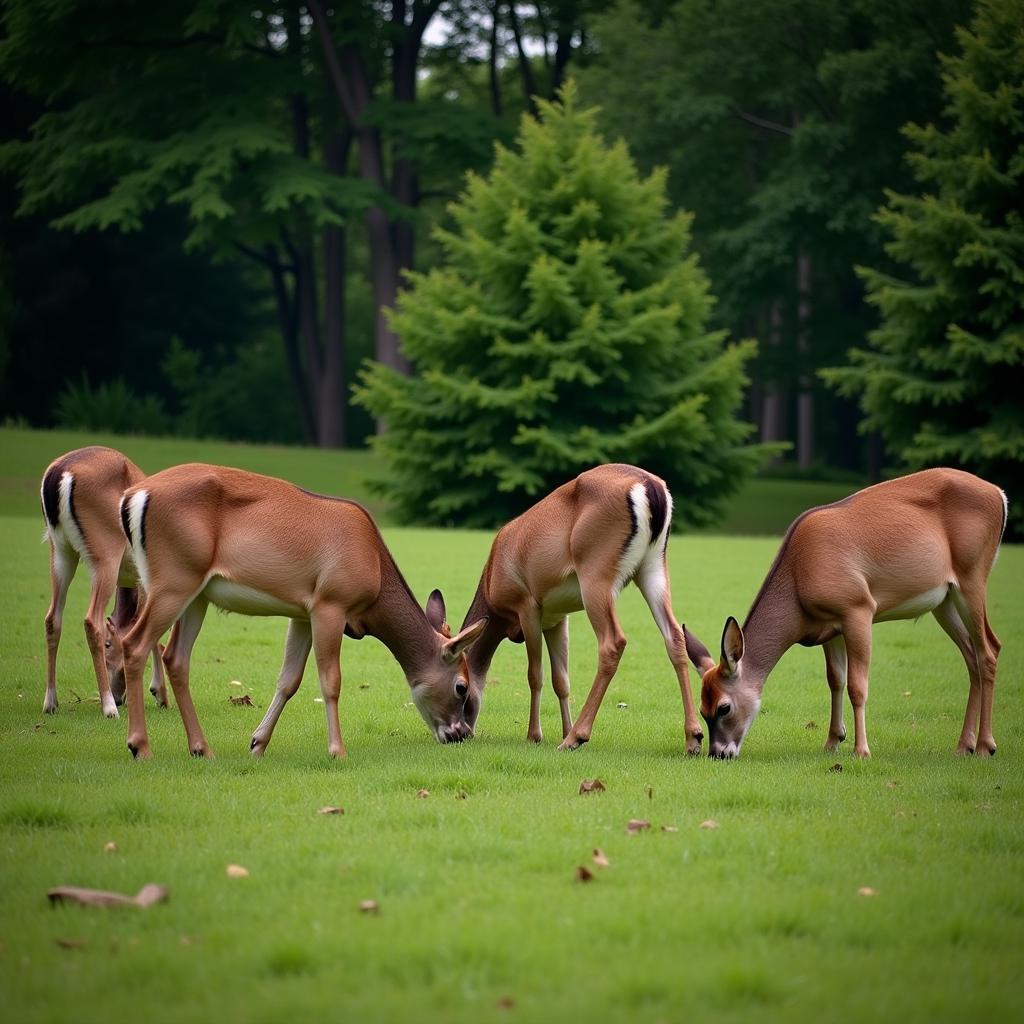Food Plots are a cornerstone of wildlife management, offering a powerful tool to enhance habitats and support thriving animal populations. Whether you’re a seasoned hunter, a dedicated conservationist, or simply a nature enthusiast, understanding the nuances of food plots can unlock a deeper appreciation for the intricate balance of our ecosystems. From selecting the right seed mix to strategically placing your plots, this guide will delve into the essential aspects of creating and maintaining successful food plots. We’ll cover everything from soil preparation and planting techniques to the long-term benefits of incorporating food plots into your land management strategy.
Understanding the Purpose of Food Plots
Food plots serve a variety of crucial purposes, extending far beyond simply providing a food source for wildlife. They can improve the overall health of deer herds by offering essential nutrients often lacking in native vegetation. Strategic placement can also influence deer movement, creating ideal hunting opportunities while minimizing pressure on sensitive areas. Furthermore, food plots can play a vital role in habitat restoration, contributing to a healthier and more biodiverse environment.
Establishing a successful food plot involves careful planning and execution. The first step is understanding your local soil conditions. A soil test is highly recommended to determine pH levels and nutrient deficiencies, allowing you to tailor your fertilizer and seed selection accordingly. Next, consider the specific needs of the target species. Deer, for instance, require different forage than turkeys or other wildlife. Researching the optimal seed mixes for your region and target species will significantly increase your chances of success.
Choosing the Right Seed Mix for Your Food Plot
Selecting the appropriate seed mix is arguably the most critical aspect of establishing a thriving food plot. A well-chosen mix will not only attract your target species but also provide essential nutrients for optimal health and growth. Consider factors such as the local climate, soil type, and the specific nutritional needs of the animals you aim to attract. For instance, oats for deer food plots are a popular choice in many regions, providing a high-energy food source during the colder months.
Different seed mixes offer varying benefits throughout the year. Spring food plots can provide crucial forage during a time of limited natural food availability, while fall plots can help animals build up fat reserves for the winter. Experimenting with different combinations can help you determine the most effective mix for your specific location and target species.
 Variety of Food Plot Seed Mixes
Variety of Food Plot Seed Mixes
Maintaining Your Food Plot for Long-Term Success
Once your food plot is established, ongoing maintenance is essential to ensure its long-term success. Regular soil testing and fertilization will help maintain optimal nutrient levels, promoting healthy plant growth. Weed control is also crucial, as invasive species can quickly outcompete your desired plants. Consider implementing a mowing or herbicide regimen to suppress unwanted vegetation. Additionally, be mindful of browsing pressure from deer and other wildlife. Overgrazing can deplete your food plot and hinder its ability to regenerate.
Rotating your food plot crops can help prevent nutrient depletion and reduce the risk of disease. Different plant species have varying nutrient requirements, so rotating crops can ensure that your soil remains balanced and fertile. Furthermore, crop rotation can help break the life cycle of pests and diseases, minimizing the need for chemical interventions. For a reliable and easy-to-establish option, consider a clover food plot.
The Benefits of Food Plots Extend Beyond Hunting
While food plots are often associated with hunting, their benefits extend far beyond attracting game. They contribute to overall ecosystem health by providing diverse food sources and improving habitat quality. They can also serve as valuable research tools for studying wildlife populations and their interactions with the environment. Moreover, creating and maintaining food plots can be a rewarding experience, connecting us with the natural world and fostering a deeper understanding of the intricate relationships within our ecosystems. Consider adding buckwheat food plot for attracting pollinators.
Conclusion
Food plots are a valuable tool for anyone passionate about wildlife and habitat management. By carefully planning and implementing your food plot strategy, you can contribute to a healthier and more vibrant ecosystem while simultaneously creating enhanced opportunities for wildlife viewing and hunting. Proper seed selection, soil preparation, and ongoing maintenance are key to long-term success. Remember that liquid fertilizer for food plots can provide quick and efficient nutrient delivery. So, embrace the potential of food plots and become an active participant in the stewardship of our natural resources.
 Healthy Deer in a Food Plot
Healthy Deer in a Food Plot
FAQ
- What is the ideal size for a food plot?
- What are the best food plot plants for attracting deer?
- How often should I fertilize my food plot?
- When is the best time to plant a food plot?
- How can I prevent weeds from overtaking my food plot?
- What are the legal requirements for establishing food plots in my area?
- How can I protect my food plot from overgrazing?
For further assistance, please contact us at Phone Number: 02437655121, Email: [email protected] Or visit our address: 3PGH+8R9, ĐT70A, thôn Trung, Bắc Từ Liêm, Hà Nội, Việt Nam. We have a 24/7 customer support team.